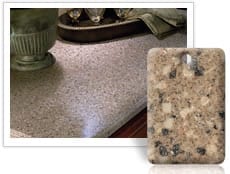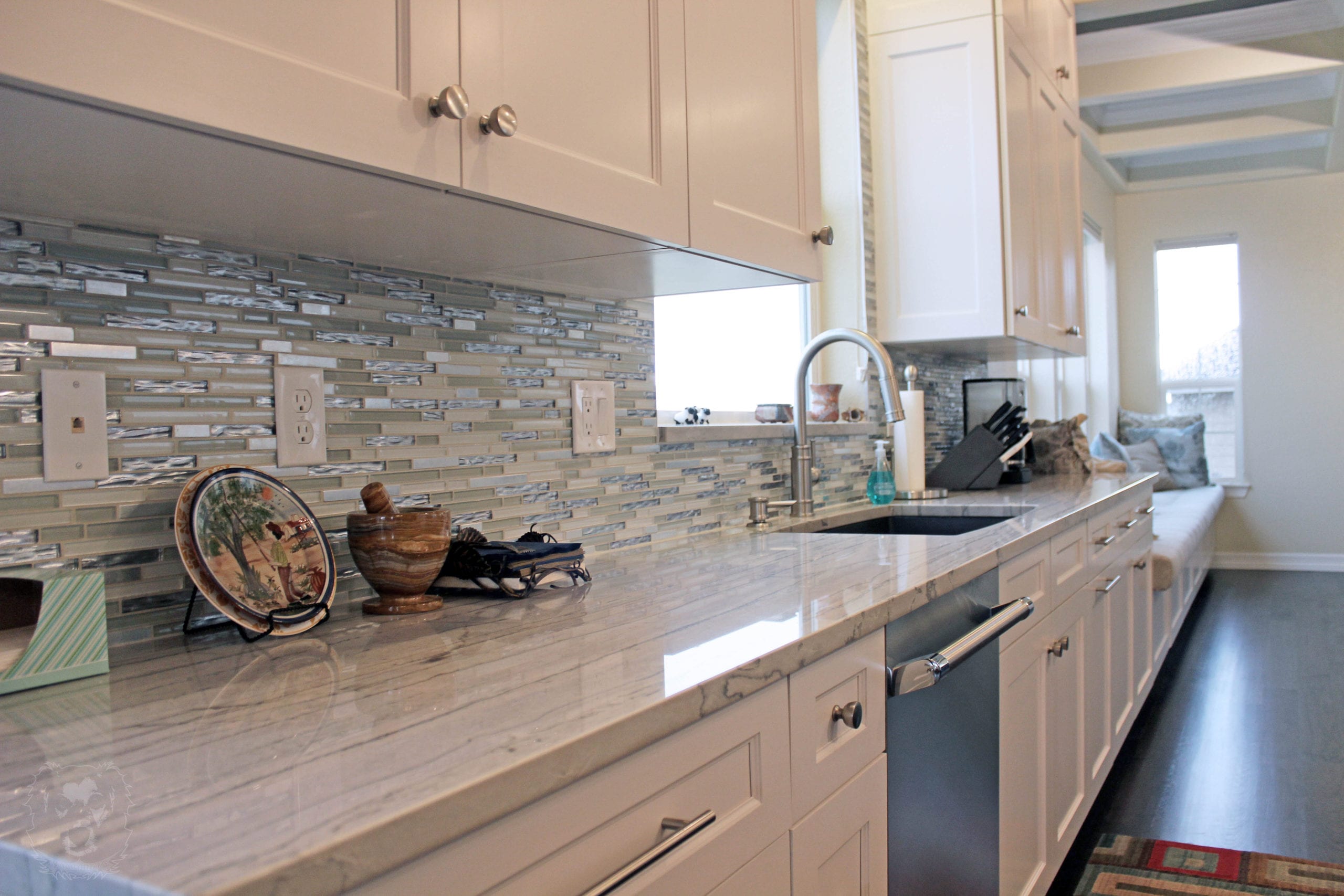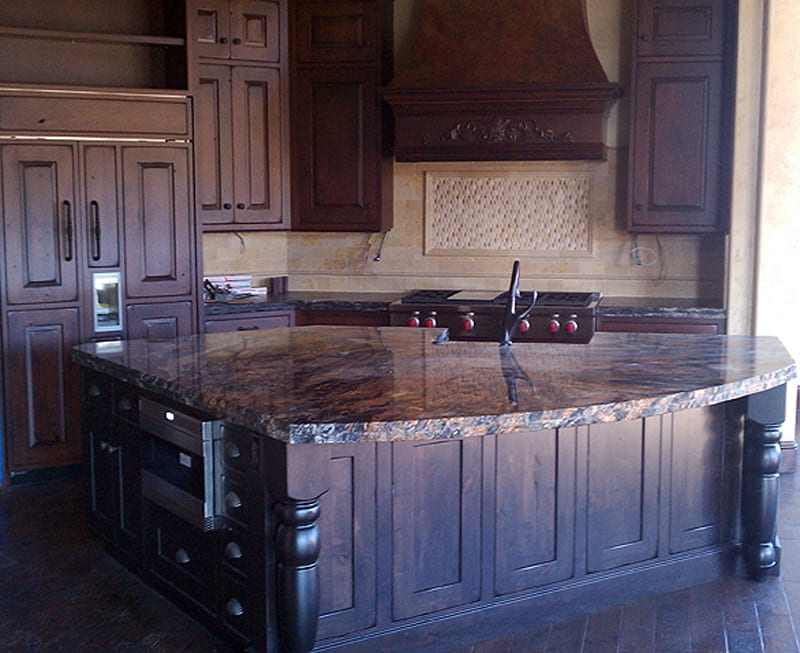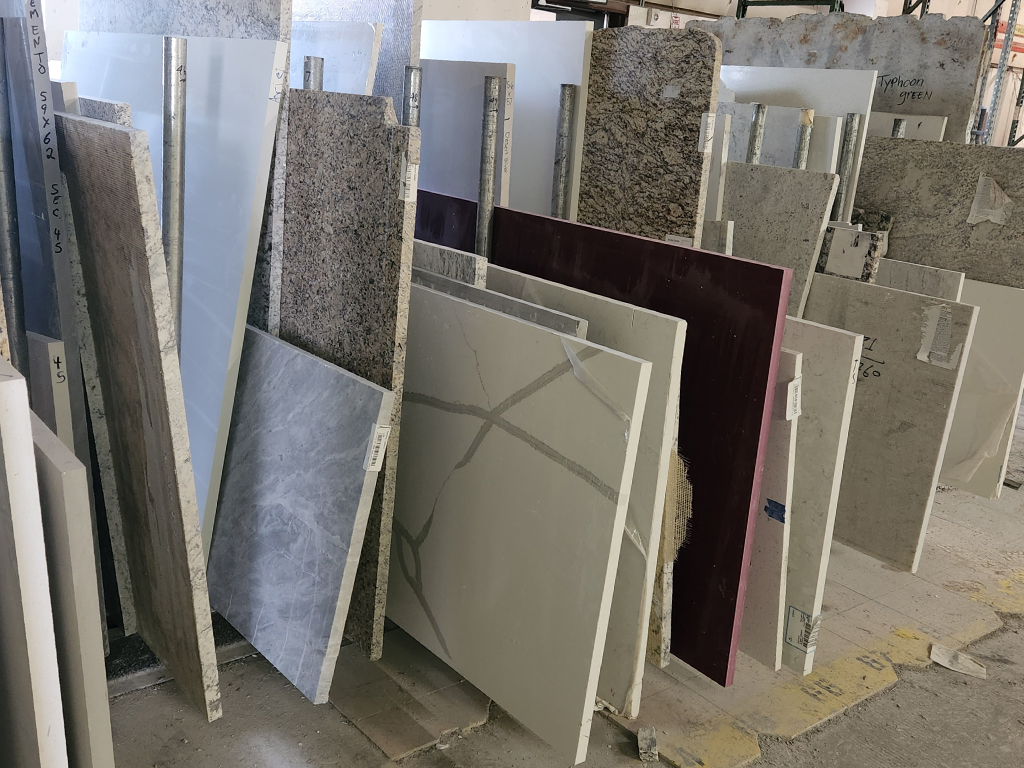Solid-surface countertops are the stuff of George Jetson, in which high-tech plastics can be heat sculpted into any imagined shape. These modern surfaces take on many appearances, including stone, yet shed the shortcomings of their counterparts with a nonporous surface that doesn’t age or develop a patina. In this cutting-edge countertop right for your kitchen? Read on to learn more.
 Photo: Wilsonart Solid Surface in Bedrock
Photo: Wilsonart Solid Surface in Bedrock
The basics: solid-surface counters are a blend of acrylic or polyester resins, powdered fillers and pigments, cast into slab. There are many manufacturers of these synthetic counters, including Corian, HIMACS, Wilsonart, Formica, LivingStone, and more.
Cost: $50 to $100 per square foot installed.
Advantages: solid surface is durable nonporous, making it resistant to stains, mildew and bacteria. Its unique composition makes buffing out scratches a breeze and provides that appearance of a seamless installation, including for integral backsplashes. This product outshines its competitors with an ability to be thermoformed into unusual shapes and configurations.
Disadvantages: its resin-based composition makes this counter material sensitive to heat and vulnerable to scratches. As with many countertops, keep your trivets and cutting boards handy.
Sustainability: many solid-surface manufacturers tout GreenGuard‘s approval, which certifies that due to the nonporous surface and low chemical emissions, the countertop contributes to healthy indoor air quality.
The ecological shortcoming of these products is their composition, which comes from finite, nonrenewable resources, including petroleum and aluminum trihydrate (ATH), which is strip mined. Choosing a solid-surface product with recycled content, can reduce the negative environmental impact.
Maintenance: soapy water will suffice for everyday spiffing up of this easy-to-clean surface. However, it’s essential to dry the surface completely after cleaning or spills, as wet counters can lead to a dull or uneven, blotchy finish.
Special considerations: acrylic solid surface is more pliable, whereas its polyester-based counterparts claim a deeper coloration. Dark colors will show more fingerprints.


